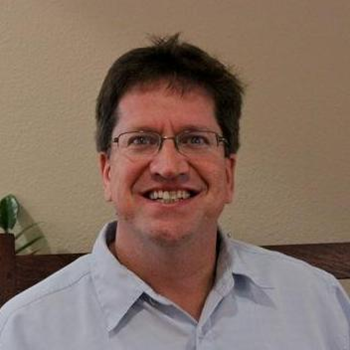As part of our ongoing series of faculty’s experiences creating and adopting alternative textbook solutions for students, this weeks post is from Dr. Paul Sims. Dr. Sims received a grant from the Alternative Textbook Initiative here through OU Libraries to take the iBook he created for his CHEM 3753, Introduction to Biomechanical Methods lab and make it available on the Web for students who don’t have an iBooks friendly device.
Here is a brief interview with Dr. Sims…
Stacy Zemke: In what areas do you teach and in what course are you using an open textbook?
Dr. Sims: I primarily teach undergraduate chemistry and biochemistry courses. I was aware that the faculty who teach organic chemistry had, with the help of a number of graduate students, converted their lab manual to an iBook. I asked Alyssa Hill, an honors undergraduate at the time, to help do the same for the undergraduate biochemical methods (lab) course. She did a fantastic job of incorporating the content that had already been developed, but she also created/incorporated new content such as interactive quizzes and apps. In addition, Alyssa took charge of the overall design of the Methods iBook, and, together with Logan Nickels, a graduate student who has worked as a teaching assistant for the methods class several times, scripted and filmed a number of excellent tutorial videos that show students how to use different equipment in the lab and how to perform various laboratory techniques. The students who use the Methods iBook are able to see how a specific task is performed prior to coming to lab, so they have a nice visual picture of how to carry out the task. Furthermore, the equipment used in the videos is the same equipment that they will use themselves. We feel that this aspect helps the students form a more accurate picture in their minds of what they will be doing.
SZ: Why did you decide to switch to an open textbook solution for your course?
DS: We felt that an open, interactive iBook was a great complement to the course. We liked the idea that students could save money by not having to buy a textbook, but we also felt that the students would greatly appreciate having all the course information in one place. Again, the interactive nature of the iBook encourages students to actively engage with the book rather than simply read it. They can take quizzes to check their understanding, and they can watch (and re-watch) tutorial videos until they feel they understand the concept or lab technique that was discussed.
SZ: What are/were the challenges in changing to the open textbook – is it similar to adopting a new “traditional’ textbook for a course – or are there other issues?
DS: Right now the main challenge is trying to ensure that all students have access to the iBook. Apple has made iBooks Author, a very powerful software suite that was used to create the Methods iBook, freely available. The catch, however, is that the platform runs exclusively on iPads. We currently are exploring how we might transfer the contents to other tablet platforms such as the Android or Windows platforms. Unfortunately, there is nothing comparable to iBooks Author in the Android or Windows realm. We have been working with the OU Library folks to make the contents of the iBook available on a Website. Some of the interactivity is lost, but it does appear to be a viable way to increase student access.
SZ: How have your students responded to this open textbook?
DS: We have surveyed two classes and the results thus far have been overwhelmingly positive.
SZ: Will you continue to use this current open solution?
DS: Absolutely. We do not feel that we had to give up anything in terms of quality. Rather, we feel that this approach is better than our previous approach to teaching the class and delivering information content.
SZ: Would you consider using an open source for other courses that you teach?
DS: Yes, and it is in the works. Last year, Dehra McGuire, an honors undergraduate, began work on an iBook for the undergraduate introductory course in biochemistry. She made excellent progress, and we hope to include this open-source book next year.
SZ: What advice do you have for other faculty thinking of adoption an alternative textbook?
DS: We have a tremendous number of talented and enthusiastic undergraduates here at OU. Many of them would likely be eager to help in the creation of an open source textbook. Once the foundation has been made, future students could help maintain, update, and add to the previous versions.
Image Source: http://chem.ou.edu/paul-a-sims
